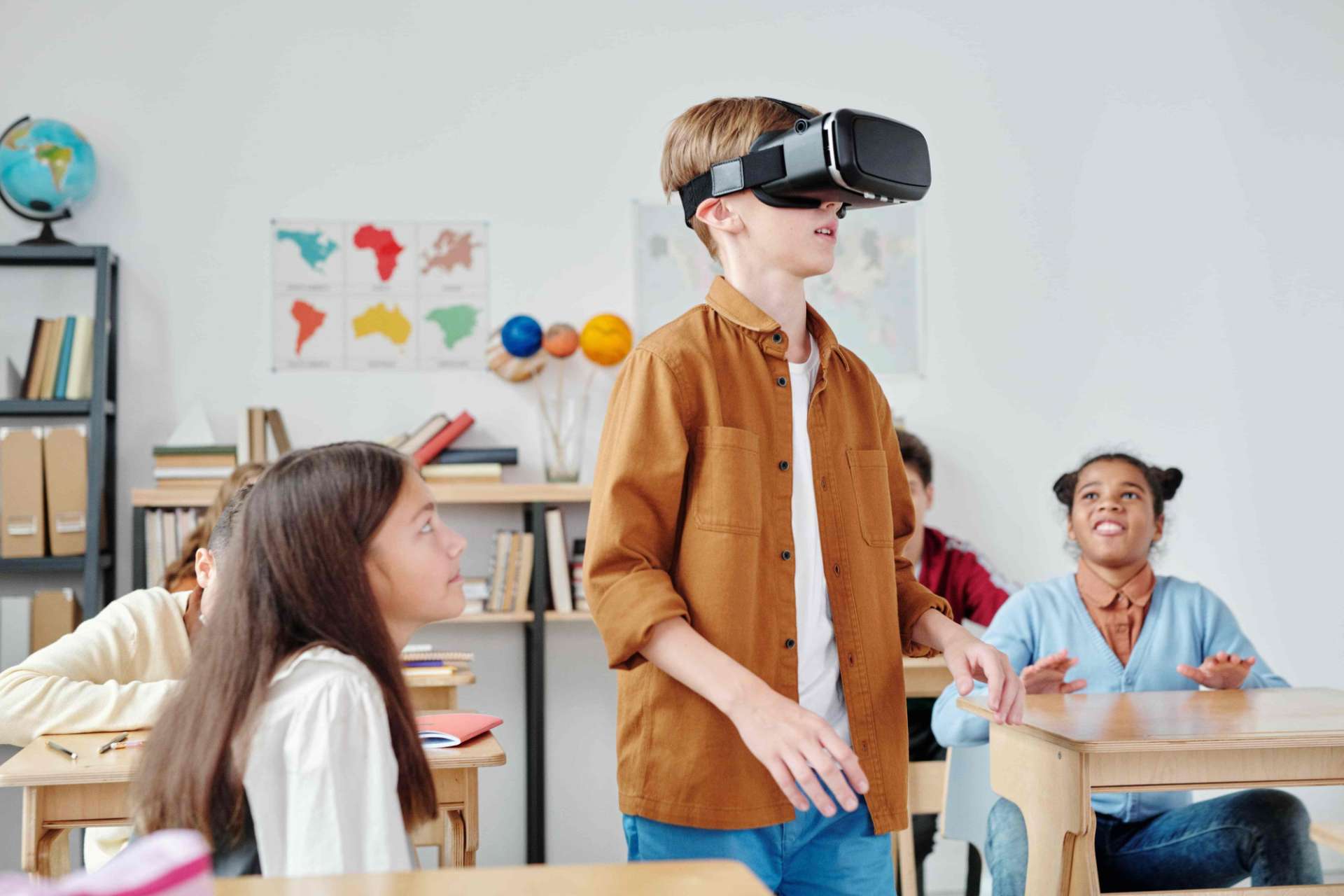Globalisation, internationalisation, digitisation and personalisation. Those are serious trends that are transforming every aspect of our society. Higher education is no exception. The students of today? They are the professionals of tomorrow. But are these professionals ready for tomorrow? For the future? Now, virtual reality (VR) and augmented reality (AR) are growing enormously. These technologies have already brought about considerable changes in the business world. Now, VR and AR are popping up more and more frequently in higher education.
VR and AR in a nutshell
With virtual reality, you introduce your students to lab facilities from a distance. You train medical students virtually by simulating surgical procedures. You let law students plead in a virtual court. Or you send archaeology students virtually to excavation to gain experience. Your students really feel as if they are in another world. With augmented reality, you bring that virtual court or that excavation into the room where you and your students are at that moment. In the lecture hall, for example.
Why VR and AR in education?
VR and AR in higher education, is it effective? Do we really want that? Yes, you absolutely do. It turns out that the material sticks much better when you use VR and AR during your lectures. No more boring lectures and thick books. Your students use VR and AR solutions to visualise their ideas. They absorb the material much faster and more efficiently. Your students are also much more engaged in the lesson and VR and AR stimulates active learning.
VR and AR can be a challenge
Don't know where to start? Don't know if this fits in with the current lectures? And all those technical aspects, how does it work? VR and AR in education are indeed a challenge. But it literally opens new (virtual) worlds. But what do you need, and what can you do with it all?
1. VR glasses
Very handy, of course. More and more VR glasses are appearing on the market. But now, there are also VR glasses made of cardboard. It's a simple box with lenses where students can put their mobile phones in.
2. What is interesting?
Talk to your students. What do they see? What do they experience during the lectures? Look together at how things are going and what could be improved. Check the material yourself. Are there similarities between your material and what your students say about what they see and experience? Bingo! Bring this together and combine it with a VR experience.
3. Getting started
VR and AR are very new right now, and all the (potential) problems with the techniques have not yet been fully mapped out. But the possibilities with VR and AR in education are endless. And one thing is for sure. You bring the lecture hall to life with virtual reality and augmented reality. Explore the possibilities together with your students. Inspire each other. And find out together what the possible risks and pitfalls are. We have already listed a few applications for you so that you can start right away.
NASA Visualisation Explorer: See the earth as you have never seen it before. The NASA Visualisation Explorer contains visualisations, animations and images of the sun and the universe. Perfect for the budding astronomer!
The mechanism of hearing: Medicine student? Discover and learn everything about ear anatomy with interactive 3D animations.
Acropolis interactive 3D: Want to send your archaeology students virtually to excavations? Or explore history first? Acropolis is the most famous building in the world! Explore the sights, buildings, and events with your students using interactive 3D scenes.
Would you like to add an extra touch to the VR or AR experiences? Together with the magic of a CTOUCH Riva touchscreen, everything comes to life. The CTOUCH Riva has standard VR apps, but you can add more of these yourself. No more dull, unproductive lessons. When will your VR adventure start?
